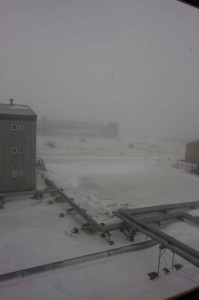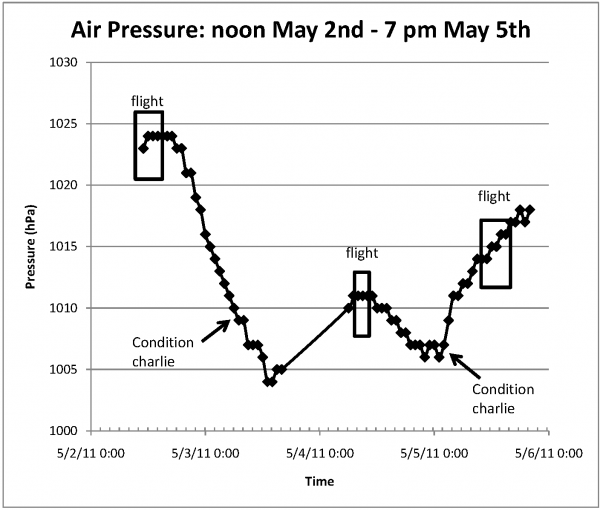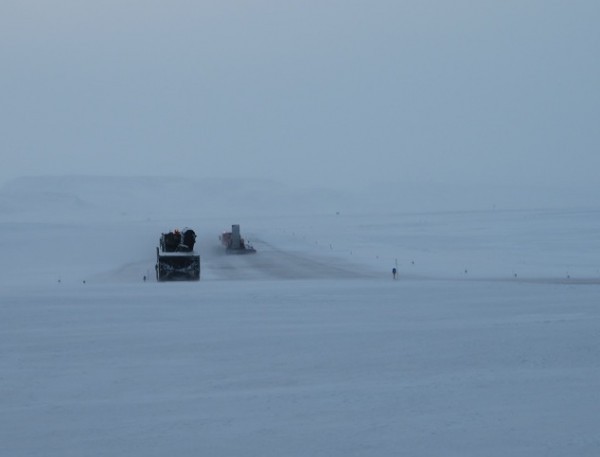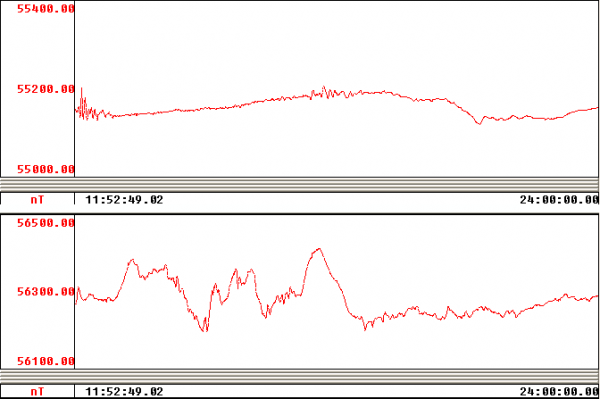Dealing with Mother Nature
Working in the poles we are constantly reminded of our dependence on meteorology, and this project has dealt us a variety of different weather considerations. The most obvious is the weather we experience at the base. Storm season in Thule lasts from the 15th of September to the 14th of May; in other words encompassing… read more

Working in the poles we are constantly reminded of our dependence on meteorology, and this project has dealt us a variety of different weather considerations. The most obvious is the weather we experience at the base. Storm season in Thule lasts from the 15th of September to the 14th of May; in other words encompassing fall, winter and most of spring! “Bad” weather is classified by temperature, wind speed and visibility, with the “storm condition” determining whether we can go outside alone, if we need to take a “buddy” or if we are allowed outside at all. Obviously this also affects whether the plane can take off for a day’s work.
We’ve had some weather passing through since last Monday, and have twice been in storm condition ‘Charlie’, where we are restricted to our dorms, or the hangar if we are on watch. We have meal ready-to-eat (MREs) on the ready for these occasions since the cafeteria will be inaccessible. This condition can last from hours to days. We have been fortunate with only quick ‘blow throughs’ and able to fit in a couple of short flights when conditions improved. I have plotted the air pressure for the last few days and it shows the two episodes of low pressure, which resulted in the bad weather passing over, and the flight we managed to squeeze in between the storms.

The second type of weather we have had to manage is conditions over the survey targets. John Sonntag from NASA/ATM gives us a briefing each night, showing weather models of the country. We are particularly interested in where there is cloud cover – since we want a clear view of the ice for the laser altimetry and for the DMS photo system. We also care about wind – turbulence can make it difficult for the pilots to fly the grid while keeping the equipment on target, and of course difficult for the passengers! Flight plans are given priorities – low, medium and high, and by balancing the weather forecast with the mission priorities John and Michael Studinger (the project scientist) have to figure out what our best target will be each day.

Finally, there is magnetic weather. Magnetic weather does not affect the atmospheric weather so most of us are not even aware of it, however it does affect the magnetic survey, and if lively enough it can even affect communications. Magnetic weather is variability in the earth’s magnetic field, and it is driven by activity on the sun, or solar flares. The Earth’s magnetic field varies from the equator to the poles with measures of approximately 30,000 nT near the equator to 60,000 nT (nanotesla) at the poles. Most of this field is from the Earth’s outer core but a small 1 to 2 % is the external field of solar interactions. It is this small external field that causes magnetic storms that last anywhere from six hours to several days. Impacts of magnetic storms are often only 50-300 nT, which might seem minor, but the effect on our instruments is important since it must be adjusted for.

There was a magnetic storm this weekend, but as the airport was closed for the weekend the plane wasn’t flying so we didn’t need to adjust for it. Had we still been in Kangerlussuaq it would have given us a good show of the northern lights. In Thule we are much further north and here the sun hasn’t set since the 16th of April! so no night-sky phenomena for us. The positive is the midnight sun works well for the night watch.
